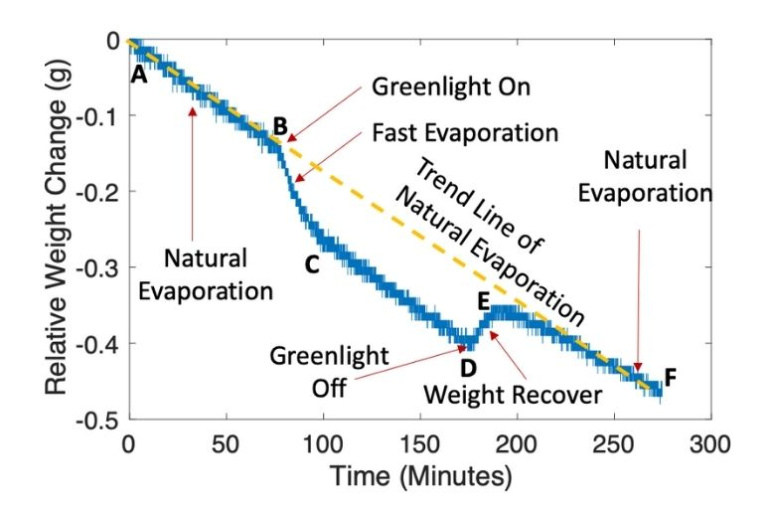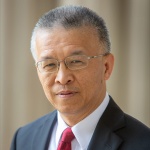Our Research Solar photomolecular desalination

Photomolecular evaporation from the pure water surface
Principal Investigator
Gang Chen
- Carl Richard Soderberg Professor of Power Engineering
- Director, Pappalardo Micro and Nano Engineering Laboratories
- Director, DOE EFRC: Solid-State Solar-Thermal Energy Conversion Center (S3TEC)
- Department of Mechanical Engineering
Gang Chen is currently the Carl Richard Soderberg Professor of Power Engineering at Massachusetts Institute of Technology (MIT). He served as the Head of the Department of Mechanical Engineering at MIT and as the director of the Solid-State Solar-Thermal Energy Conversion Center, an Energy Frontier Research Center funded by the U.S. Department of Energy. He received an NSF Young Investigator Award, an R&D 100 award, the ASME Heat Transfer Memorial Award, the Frank Kreith Energy Award, the Nukiyama Memorial Award by the Japan Heat Transfer Society, a World Technology Network Award in Energy, an Eringen Medal from the Society of Engineering Science, and the Capers and Marion McDonald Award for Excellences in Mentoring and Advising from MIT. He is a fellow of the American Academy of Arts and Sciences, the American Association for Advancement of Science, APS, ASME, and the Guggenheim Foundation. He is an academician of Academia Sinica and a member of the U.S. National Academy of Engineering.
Photo Credit: Tony Pulsone
Challenge:
How can we increase the overall efficiency of solar thermal desalination technologies for less energy-intensive clean water generation?
Research Strategy
- The research team will build a single-stage device based off of their newly discovered photomolecular effect which has the potential to significantly boost clean water production, leading to a new and fundamental desalination technology
- Optimal wavelength, angle of incidence, light polarization, intensity, and temperature will be tested, and arrays of screens or fibers will be used to create multiple interfaces for the photomolecular effect to be effective
- The evaporating surface temperature, orientation of the surface, airflow path, and condensing surface temperature will be controlled to minimize dissociation of molecular water clusters in the air and instead recondense the molecular clusters into larger droplets
Project description
The use of solar energy for desalination is not a new idea, particularly solar thermal methods by evaporation of saline water and recondensation of the vapor into clean water. However, solar thermal evaporation has an overall low efficiency because it relies on breaking hydrogen bonds among individual water molecules, which is very energy-intensive. Chen and his lab recently discovered a photomolecular effect that could be a solution.
Hydrogen bonding is known to result in spontaneous clusters fluctuating in water. The bonds among water molecules inside a water cluster in liquid water are mostly hydrogen bonds. Chen discovered that a photon with energy larger than the bonding energy between the water cluster and the remaining water liquids can cleave off the water cluster at the water-air interface, colliding with air molecules and disintegrating into individual water molecules.
The catalyst for the process is a light-emitting diode (LED) that mimics the sun’s intensity by shining onto the water surface. The team plans to work on a system that efficiently traps light to achieve nearly 100% light absorption. The photomolecular effect causes water clusters to cleave off at the water-air interface, and forced air carries the molecular clusters to the condensing section. Here, the clusters will be efficiently collected. Because of the much smaller amount of heat released during condensation of clusters, the heat rejected during condensation will be recovered to improve the system efficiency. Chen has already shown LEDs produce a photomolecular evaporation rate that can exceed pure thermal evaporation by ~ ten times.
Outcomes
- Developed heat and mass transfer models to understand the thermodynamics of evaporation in evaporative and solar still devices
- Found that the amount of ambient heat that can be absorbed can reach quite high values relative to solar input if the 3D structure is sized appropriately, allowing for the benefit of continuous evaporation rates at nighttime
- Conceived an “inverted” solar still concept with potential for higher efficiencies of up to 30% improvement compared with literature and built a prototype that could be deployed in fresh water-scare communities with brackish water supply
- Conducted experiments that showed there is reduced latent heat in polymeric hydrogels, but it doesn’t play a major role in the natural convection evaporation rate and may not be the reason for the super-thermal evaporation rates measured under solar illumination. This lends more credence to the researchers’ hypothesis of the photomolecular effect being the reason for the super-thermal evaporation under solar illumination
Publications
Photomolecular effect: Visible light interaction with air–water interface
Guangxin Lv, Yaodong Tu, James H. Zhang, and Gang Chen, Proceedings of the National Academy of Sciences of the United States of America (PNAS), 2024
Plausible photomolecular effect leading to water evaporation exceeding the thermal limit
Tu, Yaodong, Jiawei Zhou, Shaoting Lin, Mohammed Alshrah, Xuanhe Zhao, and Gang Chen, Proceedings of the National Academy of Sciences, 2023
News
Additional Details
Impact Areas
- Water
Research Themes
- Water Purification & Desalination
Year Funded
- 2022
Grant Type
- Seed Grant
Status
- Completed




